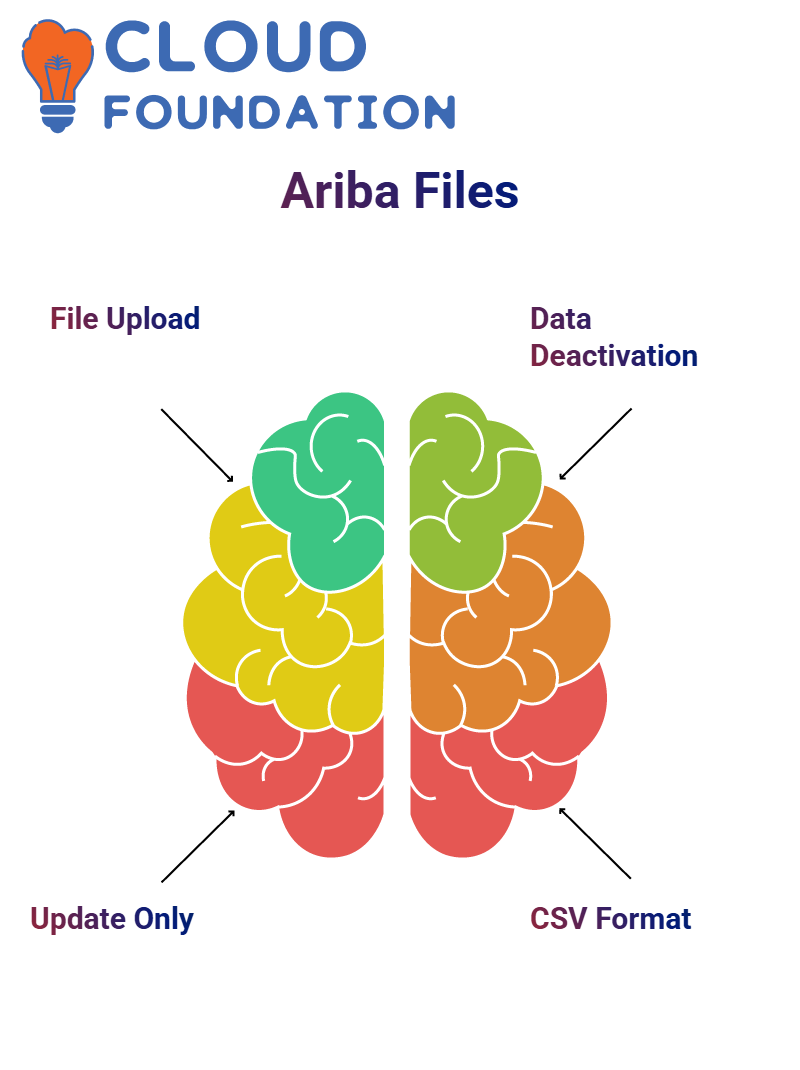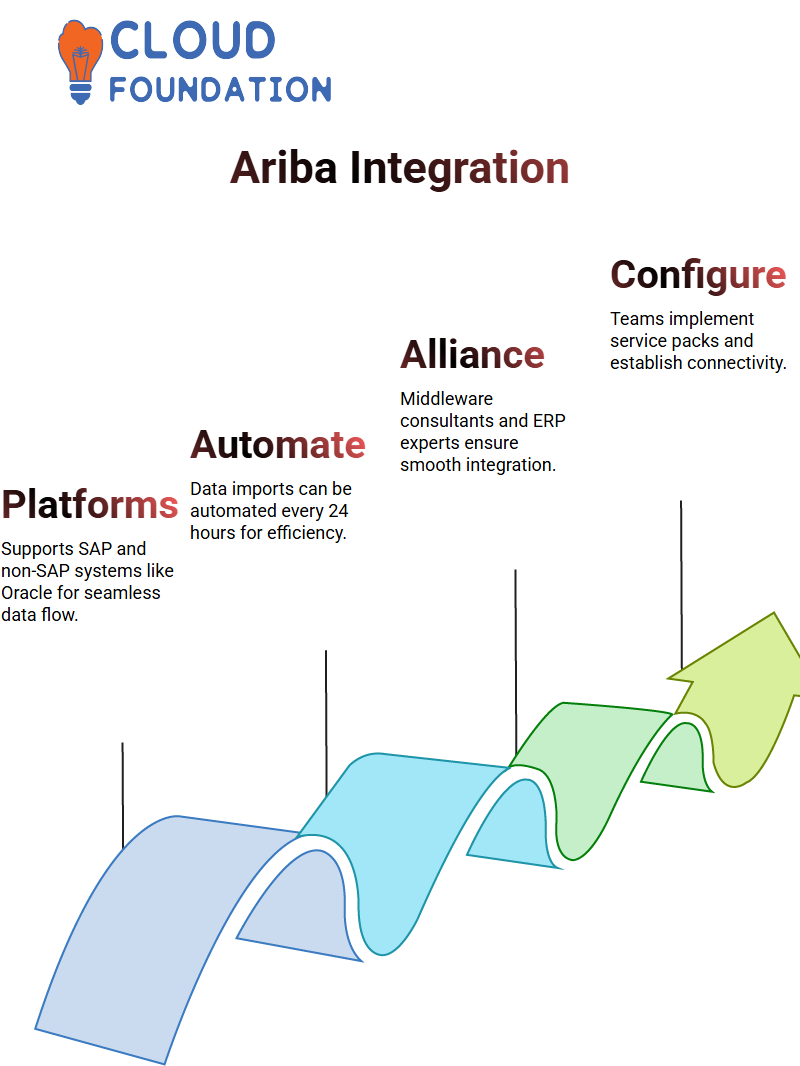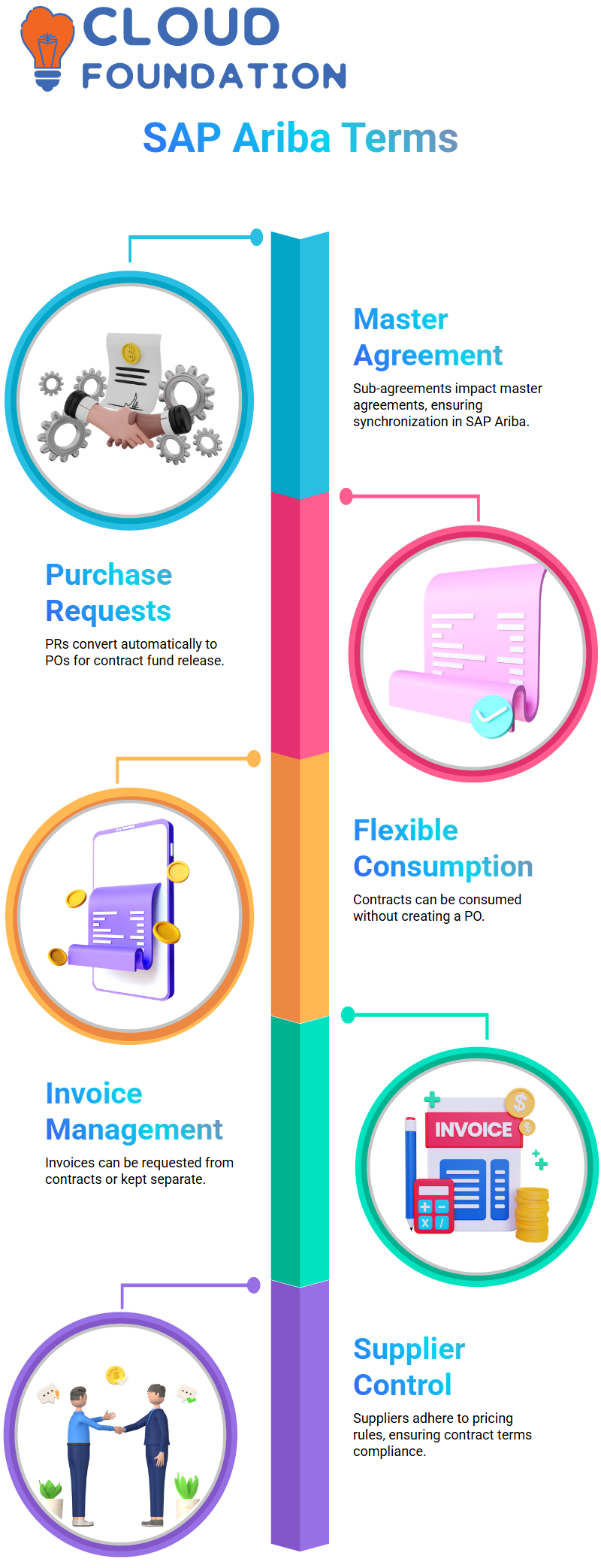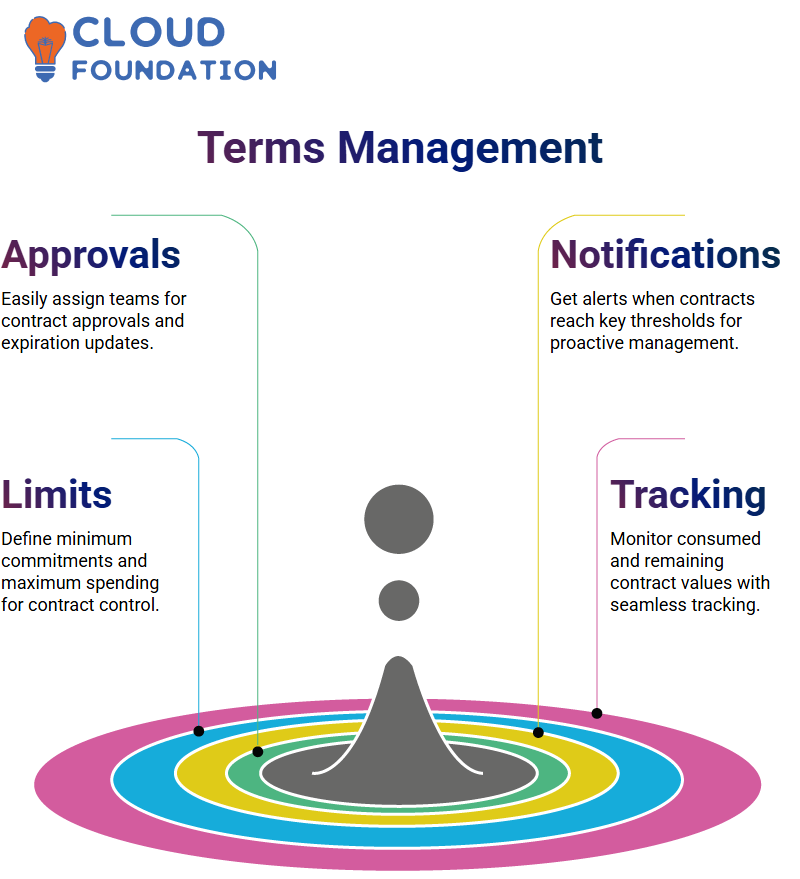SAP Ariba Sourcing & Procurement Tutorial
Understanding SAP Ariba Import and Export
Essential functions of SAP Ariba include managing data input under the site manager. If your system isn’t yet integrated, data can still be regularly retrieved from offices as needed.
Otherwise, web services provide seamless data management when integrated with existing systems.
SAP Ariba’s web services have been specifically designed to collect data directly from ERP systems. You can import or export information with ease using the web services they provide.
How SAP Ariba Handles Import Tasks
SAP Ariba’s import tasks provide an indispensable method for loading data into its system.
You can manage information such as unit of measure (e.g., each, drum, and kg).
Furthermore, SAP Ariba maintains an overview of completed imports by displaying their statuses and details, such as “This import completed successfully!”
SAP Ariba streamlines the data importation process, providing orderly access to critical details such as company codes and master data.
Exploring Export Options in SAP Ariba
Exporting data in SAP Ariba is simple. Use the export option to download account types or system data directly to a file system for safekeeping.
SAP Ariba ensures this data will appear clearly for future reference.
The process makes it quick and straightforward to analyse or modify exported data for purposes such as code modifications and upholding company standards.
Master Data Management in SAP Ariba
Master data forms the backbone of SAP Ariba. This includes company codes, purchasing groups, units of measurement and cost centres.
Among others, it is used across all systems in SAP Ariba for consistency and reliability.
SAP Ariba makes managing company codes simple.
Search, update, and add or modify records seamlessly to ensure your data remains accurate and valuable.

Best Practices for Loading Data in SAP Ariba
Load is recommended when adding data into SAP Ariba. This feature creates or modifies objects based on what exists or doesn’t in an import file; existing records will be modified.
Any that do not yet exist will be created and managed efficiently, such as duplicate records.
Avoid using the “Update Only” option when setting up projects, as this practice deletes older data and keeps only imported records active, which is best left for initial setups of information.
Understanding SAP Ariba File Loading
Working with SAP Ariba requires careful management of file uploads.
When selecting to update, any old entries, such as those 168 old records, can be deleted, leaving only newer data intact.
While SAP Ariba does offer an “Update Only” feature, I find its use somewhat perplexing.
Unfortunately, that’s the way it works and can’t be changed.
One key rule I tend to adhere to is avoiding using this mode unless performing your first load of goods into SAP.
At SAP Ariba, data deletion must be handled carefully.
This applies especially in test environments where others rely on that particular test data for various tasks.

With SAP Ariba being so complex and interwoven into daily business lifecycle processes, any accidental data removal could prove devastatingly disruptive and cause major headaches down the road.
SAP Ariba’s Approach to Data Deactivation
SAP Ariba does not rely on deletion; instead, we deactivate data.
For instance, company codes that are no longer in use may be deactivated instead of deleted to conserve storage space and maintain compatibility.
Deactivation occurs by leaving data within SAP Ariba but marking it inactive.
To deactivate, upload it as usual under the “deactivation section.” Until further notice, CSV files should always be used when uploading in this manner.
No notable names need be applied here; the data itself matters most.
To update or deactivate company codes, modify the individual data fields in a file without altering other sections, and then upload it again.
SAP Ariba’s Data Dictionary
SAP Ariba provides clients using its service with access to an invaluable support document known as the Data Dictionary, available for all file types used by SAP Ariba clients.
Within it are listed field names, descriptions, data types and other essential details about each file type in question.
For example, when working with company codes, SAP Ariba provides detailed instructions, sample values, and required fields in its Data Dictionary.
I particularly admire its seamless integration into SAP systems.
SAP Ariba’s field names closely align with those in SAP, making mapping and data migration seamless.
SAP Ariba Purchasing Data
SAP Ariba makes using and understanding purchasing data files straightforward by structuring them in a user-friendly and transparent manner.
Each file features descriptions, unique names and field details designed to assist in effectively maintaining organisational entities.
When working with purchasing unit files, SAP Ariba streamlines your workflow with its Data Dictionary as the primary resource.
Here you’ll find guidelines, sample values and specifications designed to ensure an effortless purchasing process. SAP Ariba truly simplifies the data handling experience.
SAP Ariba: Managing Data with Ease
As soon as you start using SAP Ariba, the data dictionary becomes your go-to resource.
Descriptions and parameters are crucial when managing purchasing units effectively.
Each has a unique identifier as well as user-visible names to categorise and utilise them efficiently and easily.
SAP Ariba provides sample values and string length specifications, making data loading easier.
However, accuracy must always be observed, as even minor mistakes, such as adding an extra comma or dot, can trigger errors. With experience comes the mastery of such challenges.

SAP Ariba Data Loading Process
SAP Ariba’s data loading process begins by importing company codes, followed by verification of their status after import.
When marked “Complete,” all data has been loaded correctly. Click further into that status to review details about the created, updated, or deleted records.
Errors during data loading can be frustratingly frequent.
For instance, uploading an Excel file instead of CSV will trigger SAP Ariba’s system-provided error messages to assist with corrective measures and rectifying issues as quickly as possible.
Once remedied, you can reload and continue seamlessly without issues or setbacks.
SAP Ariba Integration with ERP Systems
SAP Ariba offers seamless integration between ERP platforms, whether they are SAP-specific, such as Oracle, or other non-SAP solutions.
Such as those run on SAP and those outside its ecosystem, like those run by non-SAP platforms like Salesforce or Magento.
Integration involves setting up web services that seamlessly pull data from one system to another, ensuring a smooth data flow.
At an enterprise-scale level, automating data imports every 24 hours could involve pulling changes from an ERP table, such as “Ariba Changed October.”

Incorporation requires collaboration among middleware consultants and ERP experts. Teams involved in implementation include those responsible for service packs, configuration settings, and establishing connectivity.
Their technical expertise guarantees that SAP Ariba and ERP systems work harmoniously together.
The Collaborative Effort Behind SAP Ariba Integration
Integration into SAP Ariba requires multiple experts: middleware consultants oversee their domain while ERP developers handle configuration.
Together, these teams form an intricate ecosystem.
Their work often includes creating conditions and solving technical challenges to ensure everything runs seamlessly.
SAP AribaData Management
Where data management becomes effortless and efficient. If you’ve struggled with loading users, cost centres, or commodities into Excel files for uploading purposes, SAP Ariba makes everything effortless with seamless data handling and integration for seamless operations.
With SAP Ariba, creating, managing and importing users is fast, effortless and manageable.
The system understands your specific requirements by quickly loading unit measurements and configuring desired parameters with ease.
Data structuring plays a crucial role in SAP Ariba. From cost centres and general ledger accounts to managing all forms of documentation accurately ensures smooth transaction processing.
Commodity and company codes play a pivotal role in structuring financial processes within SAP Ariba.
One of its central requirements involves maintaining accurate commodity mapping files.
These files help establish relationships among commodity codes, general ledger accounts and company codes.
When an entry is missing from these files, SAP Ariba immediately notifies you, thereby helping to prevent transaction errors from occurring.
In addition, SAP Ariba ensures all account types, UNSPC codes and material groups are linked correctly with ERP systems for optimal efficiency.
Businesses can benefit from aligning these datasets to streamline procurement processes and avoid discrepancies in financial records.
Have you ever noticed specific entries being rejected while others are accepted? In SAP Ariba, every selection is validated using predefined mappings, ensuring accurate results.
If SAP Ariba alerts you to an issue, commodity mapping provides all the necessary information on how and where to address it.
With its ability to categorise items by commodity codes, procurement runs more smoothly.
SAP Ariba offers businesses of all kinds a seamless solution for structuring data.
By maintaining relationships between commodity codes and general ledger accounts, this system ensures that transactions can be processed accurately.
SAP Ariba alerts users if an entry is missing to maintain compliance with financial regulations and reduce confusion by maintaining structured records of cost centres, general ledger accounts and purchase requisitions.
SAP Ariba enables businesses to validate entries before committing transactions, ensuring accuracy across all procurement channels and optimising procurement operations by seamlessly integrating key financial elements through this powerful solution.
SAP Ariba’s mapping file serves as its foundation, helping users maintain accurate records while preventing transaction errors and simplifying procurement activities without concern over missing entries or incorrect mappings.
SAP Ariba’s organised approach to commodity classification ensures accurate financial records, saving businesses from unnecessary errors.
The importance of SAP Ariba mapping files in achieving efficient procurement processes.
SAP Ariba offers businesses an efficient way to align procurement activities and financial operations, streamlining every stage of the purchasing process.
With flexible purchasing operations that support businesses across their supply chains and cost centres.
Precision in commodity mapping and account administration ensures greater transparency throughout each transaction, streamlining procurement operations.
SAP Ariba simplifies achieving financial accuracy with its mapping system, which guides and prevents errors while ensuring compliance with procurement standards.
Every GL account and commodity code is structured correctly within SAP Ariba for smooth operations.
SAP Ariba revolutionises how businesses manage financial data.
Instead of manually entering procurement orders into various systems, relying on SAP Ariba helps streamline procurement operations more effectively while simplifying the structuring of purchase requests across accounts.
Proper alignment between commodity codes and company codes ensures smooth procurement processes with zero mistakes or oversights.
With SAP Ariba, businesses can easily maintain accurate procurement records.
SAP Ariba ensures that every financial transaction relies on well-structured data for successful operations, without unnecessary delays, making the use of SAP Ariba an indispensable asset to businesses.
Utilised efficiently by businesses seeking seamless operations without delays caused by mismanaged financial entries, companies can easily manage financial entries while accurately structuring procurement data, without unnecessary delay or frustration.
SAP Ariba revolutionises data management by eliminating inconsistencies between procurement records.
Businesses using proper mappings can easily achieve financial transparency and operational efficiencies with this solution.
Understanding SAP Ariba: Release and Consumption
SAP Ariba simplifies contract administration by helping companies better understand their consumption.
Imagine you have created a master agreement and have begun using various subagreements from within it.
Assume $25 is spent from Sub-agreement One; SAP Ariba ensures everything stays aligned accordingly.
Your next steps may require creating either a purchase order (PO) or a PR (Purchase Request), with SAP Ariba automatically converting PRS into POS, allowing funds from contracts to be released.

However, you also have the flexibility of purchasing contracts without creating a purchase order (PO).
Our platform streamlines decision-making by offering options tailored to your specific needs and requirements.
SAP Ariba and Invoice Management
SAP Ariba makes invoice management straightforward: request invoices directly from contracts or keep them as separate entities based on your organisation’s accounts payable processes.
Depending on these settings, SAP Ariba can automate invoice management processes, allowing you to choose between direct requests or maintaining them as separate entities.
SAP Ariba provides suppliers with clear instructions on whether they may add non-catalogue items or modify invoice prices, thereby protecting pre-negotiated agreements while ensuring suppliers comply with predetermined terms and pricing structures.
Approval, Notifications, and Contract Limits in SAP Ariba
SAP Ariba makes setting approval lists and notifications effortless, allowing you to assign team members to oversee contract approvals as they become due, while receiving notifications when contracts are nearing expiration.
SAP Ariba helps set contract limits efficiently, whether that means setting minimum commitments or maximum spend values.
For instance, if the maximum contract value was $100,000 but only 20% has been consumed so far by one supplier, the remaining $80% would be tracked seamlessly by SAP Ariba.

As your metrics approach key thresholds, the platform provides timely notifications for proactive management.
The Role of Payload Amount in SAP Ariba
SAP Ariba also takes into account any prior spending when migrating contracts to its system, making adjustments as you consume contracts through previous systems.
For instance, if $20,000 of it has already been expended, while in another, SAP Ariba allows for this and displays only $40,000 as the current balance owed on contracts migrated over.
This feature ensures smooth transitions by maintaining all historical spend data within the system for accurate record-keeping and management purposes.
Understanding SAP Ariba for Planning and Forecasting
Introduce SAP Ariba and discover its capabilities of revolutionising your planning and forecasting processes.
SAP Ariba is more than just a tool; it serves as your partner in seamlessly integrating demand planning solutions.
SAP Ariba excels in Integrated Business Planning (IBP).
For planning and forecasting purposes, SAP Ariba delivers an unrivalled user experience, whether that means managing costs and spend efficiently as a supplier or forecasting sales as an analyst.
SAP Ariba’s focus is not simply numbers but rather on providing actionable insights for suppliers to access critical supply information directly on its platform, making it ideal for integrated systems where precise delivery requirements exist.
How SAP Ariba Simplifies 4-Cost Expenses
4 Cost Expenses Can Feel Overwhelming. Unfortunately, four cost expenses can feel dauntingly complex; that is where SAP Ariba comes into the picture.
While only specific systems fully utilise their functions, SAP Ariba integrates smoothly with demand planning and forecasting systems, so everything works without incident.
Consider a system that streamlines these functions while arming suppliers with vital data.
That is what SAP Ariba does – providing your staff with enhanced ability to foresee and adjust expenses using integrated strategies while remaining intuitive and practical for daily operations.
SAP Ariba’s Role in Pricing Terms
SAP Ariba stands out in terms of pricing, providing both suppliers and demand planners with a structured yet flexible framework to stay aligned on pricing matters.
Pricing terms using SAP Ariba and observe its features that significantly simplify price structuring processes.

Furthermore, SAP Ariba makes demand planning and pricing alignment tasks a pleasure, rather than something to fear.
SAP Ariba offers an exciting take on what would otherwise be an uninspiring process of pricing terms, and it will become indispensable.

Sai Susmitha
Author



